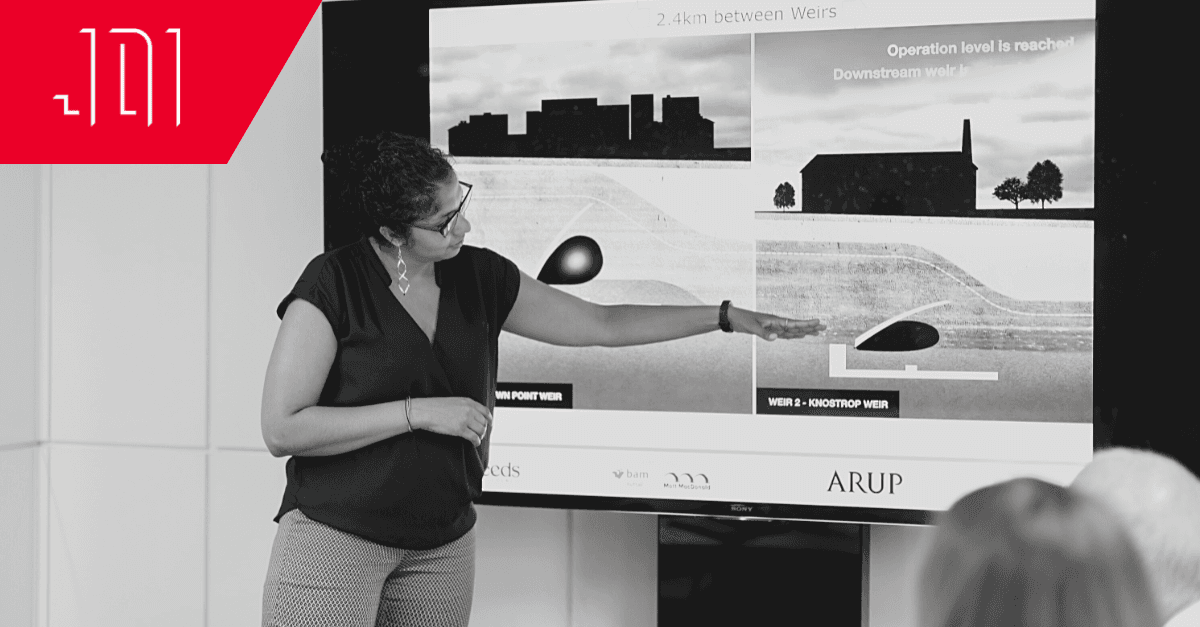Q&A with Nancy Harvey
How should founders be managing investor relations during these tumultuous times?
Well first let’s ask, how should founders be managing themselves in “these times”? And the corollary -- is there truly something special and unique about these times? I don’t think so. Not in the way some people are using this to explain away issues. Uncertainty, volatility and ambiguity are ever present. Yes, today business systems are deeply interconnected, such that the failure of the bank that your payroll processor uses could jeopardize your business. But the sky is not falling. Banks fail. States default. Wars erupt. Busts follow booms follow busts. Volatility is not for a time, it’s the enduring stage for business and a founder’s opportunity to out shine.
If you’re one of the founders who issued a midnight memo to investors when SVB choked, exactly what valuable insight on your leadership and venture did you share? Or were you just caught up in the whirlwind of the moment? Founders should manage investor relations in their own distinctive style, with a cadence of regular communication that conveys their leadership and execution. If by chance you get caught short, don’t give in to the moment. Instead, stop, breathe, and think. Reach out to a trusted Board member or two. If you’ve got a PR advisor (and you should), get a hold of them. Let these people you trust help you frame what you need to say and how best to convey. Too often first-time founders experience and convey panic that isn’t healthy for them or their investors.
That said, I believe we are living in catalytic times. We are in the first ever era of scientific-driven innovation, what the Renaissance was to art. An era marked by explosive discovery manifest across diverse disciplines with applications from the bizarre to the critical. Faster snack food delivery. Science that addresses the existential global threat of climate change. Science that enriches and extends life – biotech, healthcare, food/agriculture. Science that extends horizons – new materials, sustainable energy sources, gene editing, AI – you name it. An era not just of invention but of unprecedented, rapid, globally-spread adoption and impact.
This era is marked by audacious founders, tackling inconceivably difficult challenges with bold vision and dogged perseverance. They are bringing sanitation to slums of East Africa; expanding to regenerative agriculture; establishing circular economies. They are contributing to healthier lives and more sustainable, equitable, and resilient environments. They are tackling real challenges and bridging cultural crossroads. If you agree with me that these are catalytic times, then your challenge in managing investor relations is to convey the importance of your vision and your ability to deliver impact. All the time. At any time.
What are some of the important questions startups should be asking themselves that they commonly don’t?
A few come to mind, For me, the key question is always, “Why?”: why does what you’re doing matter?
Does it make the world safer, healthier, more equitable, more sustainable? Does it address a purpose that you perceive is valuable, whatever that purpose may be? If you’re building off cool science – whatever that science – you’re uniquely privileged. Honor that privilege.
Even if you’re not leveraging extraordinary discoveries, will you have impact that matters? Early on I had the chance to propose, fund, and launch a specialty care hospital for patients who were technology dependent and expected to die. Our team invented a new model of care and to our surprise, one of the patients recovered and went home. And then another. And then another. People who were supposed to die, lived. Decades later this remains one of the most gratifying accomplishments of my career.
My next question is, “Are you set to use your next fund-raising round to attract the right people?” Money Is fungible. Investors are not. Raising money is one of the few times you have to invite people onto your team. Are you deliberately inviting specific people to join you or shaking dollars from any tree?
Another question. Do you have the best Board for you now? The popular, post-money, 3-person board – CEO/founder, investor, independent – risks myopia. The most effective Boards have 5-7 people. The dynamic achieved and insights gained with that critical mass leads to better companies with grit, experience, and good judgment. But, building a diverse board is hard work. Too often boards simply grow organically with additional investors at funding junctures. Are you deliberately adding the right kind of people that add the experience, character, and relationships you and your company need to grow? And, no, Advisory Boards and Committees and miscellaneous advisors and observers are not the same thing.
Lastly, on a pragmatic note, some founders take fund-raising best practices as gospel, i.e., X months to raise a seed, Y for a series A. These best practices are good advice, but only if they make sense for your business. Make sure that the capital is deployed when it is most effective, but preserve cash and conserve runway when it’s not. Always have a Plan B with alternative sources lined up and ready if needed.
If you could magically fix one thing about science commercialization what would it be?
This is the best question!
Every research university would establish an Innovation Venture Fund. A fund set up to provide early-stage capital to startups associated with the university. Open to faculty and student founders. Possibly alumni.
This would convey, unambiguously, confidence that the science, engineering, and education within their walls is poised for commercial impact. It would seed a kind of cultural-gravitational pull to kick-start venture development, encouraging and supporting those faculty and students with an appetite to create innovations. Universities would have an unassailable reason to robustly engage successful alumni and local innovators, business builders, and executives.
Ultimately, the universities would do well to backfill building blocks. Knit innovation infrastructure. POC programs. Incubators. Accelerators. A bevy of diverse resources to teach good practices, foster collaborations, attract advisors, et cetera. But rather than waiting for all those pieces to emerge and mature, the Innovation Venture Fund would make its first call for proposals.
Establishing a university-wide culture of innovation by building from the bottom up, takes ages. Even with clear vision and enthusiastic intent. During that time, good inventions which might have become great therapeutics and products are lost. Potential innovators wilt on the sidelines. Inspired innovators are derailed and lose interest. The virtuous cycle of venture reward fails to launch. Time and talent are squandered. We know this because this is today’s reality.
Universities are courageous when it comes to recruiting young, innovative faculty, taking a gamble on them, and investing millions in state-of-the-art facilities. This is what every administration has done and is expected to do. However, taking the next step of fostering innovation with any kind of material (and clearly at-risk) investment is not within the bailiwick of traditional university goings on. These initiatives get trapped in analysis paralysis and internecine disputes over authority and budget. Far too much time has been spent – is still being spent -- trying to establish rigorous methodologies to quantify ROI for firestarter, Proof of Concept funds trying to justify allocating $25-50K. Far too many distinguished research universities rely solely on I-Corps for seeding and nurturing early innovation.
You’ll never learn to ski the gnarly terrain by perfecting technique on the bunny hill. This I know because I tried it. You need the experience of more challenging terrain to tune muscles and minds. Unless and until universities venture into venture terrain, they will never master it. Faculty and student innovation will be shortchanged. Innovations that might have saved lives, enhanced communities, sparked economic growth engines; all will fail to see the light of day.
It isn’t an absurd stretch to envision university Innovation Venture Funds popping up like weeds. University research funding reaches up to the hundreds million annually. Operating budgets reach the billions – ditto endowments. Establishing an inaugural $10M Innovation Venture Fund would take a commitment of roughly $1M/year for ten years. $1 million. A toe in the water. NYU launched its $20M Innovation Venture Fund in 2010! Nothing would ignite science commercialization faster than the top 20 research universities establishing $20M Innovation Venture Funds and setting out to succeed in venture as they do in research, publications and recruiting. Imagine if the top 50 did so!
The second bit of magic I’d like to see to drive science and science commercialization is an uprising of scientists running for local and national office. In the halls where important environmental, health, and other policies are surfaced and endorsed, there is a conspicuous lack of scientific literacy and an abundance of lobbyists. Ideally, magic would flip that balance.
What sets apart the innovation and tech hub in the United States Midwest?
Tech innovation and entrepreneurship is in Midwest DNA, as is a bias for action. We know how to start companies that matter and build them to scale, see: Henry Ford, Detroit, automobiles. Midwestern innovation and manufacturing literally changed the landscape and culture of America in the 1900’s.
Across the Midwest tech hubs are built on strong, diversified economies anchored by long-time global leaders that guide and support. Advanced Manufacturing. Life Science. Biotech. Ag/Ag Tech. IT/Data Science/AI. Healthcare. Transportation/Logistics. Finance. No one sector owns innovation. Proximity fosters collaborations, mashups, and cool progeny.
Importantly, the vast Midwest is a global epicenter for research, discovery, and innovation for critical challenges facing mankind – global food security, climate crisis resilience. In the Midwest, Ag and AgTech are lifeblood.
The Midwest spans close to a billion square miles, dwarfing Texas, the Bay Area, and the Northeast. It is home to a dozen urban centers and some of the country’s greatest private and public universities and health care systems. Across that, one finds cultures that traditionally value collegiality and civility, exemplified by the Big Ten’s fierce competition and collaboration.
Lastly, for the humans and dogs involved, the innovation and tech hubs of the Midwest are housed in vibrant urban centers that offer attractive, affordable living!
You mentor a lot of women entrepreneurs and leaders. What do you wish a mentor had told you earlier in your career?
I’m sufficiently aged that I hope any advice I could have been given would be largely irrelevant today.
The one piece of advice that I give women (and men), is to act, to step forward.
Business schools inadvertently feed into a tendency to lean into analysis, by strongly encouraging founders to seek guidance from as many sources as possible. This is a healthy thing to do – at the start. But, can become a bit of an impediment to action.
Plans don’t need to be perfect, and they never will be. When I was with the TenFold Corporation I got to know the Marriott Corporation well. Since then, when I’ve taught intros to entrepreneurship, I highlight Marriott in the first lecture. The Marriott we know today, the global behemoth, started as a 9-seat root beer stand. Yep, a 9-seat root beer stand with an A&W root beer license. That plus a culture of constant innovation and exceptional financial management.
I tell founders, “Start”. Start stepping forward. Bring your best to it. Good ideas grow to greatness in the harsh light of day.




